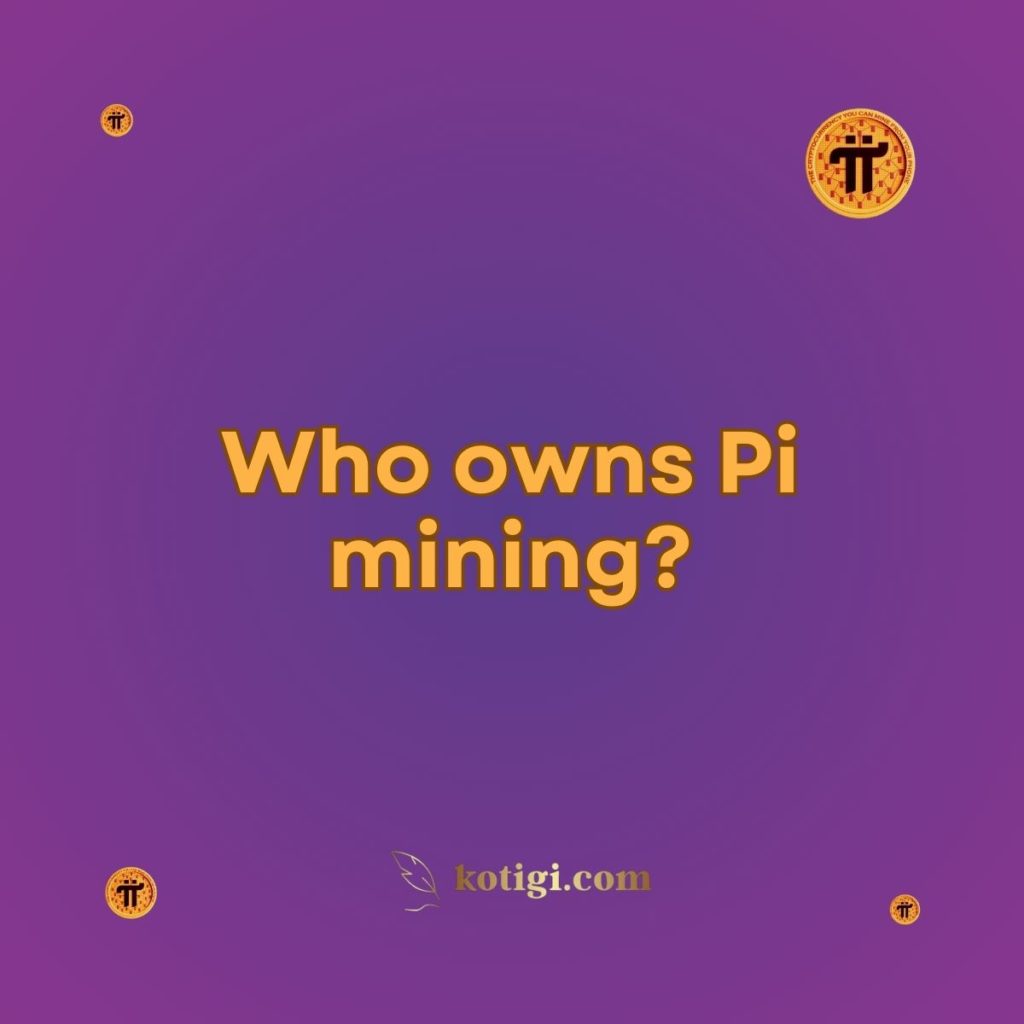
Who owns Pi mining?
Pi Network is owned and operated by a team of Stanford graduates, including Dr. Nicolas Kokkalis, Dr. Chengdiao Fan, and Dr. Vincent McPhillip. These founders are responsible for the development and management of the Pi Network and its associated mining operations. Ownership and control of Pi mining are centralized within the core team, which oversees the network’s operations and strategic direction.
Introduction
Pi Network is an innovative cryptocurrency project that has gained significant attention due to its unique approach to mining. Unlike traditional cryptocurrencies that require complex hardware and substantial energy consumption, Pi Network allows users to mine Pi coins using their mobile phones with minimal computational power. This approach has led many to wonder about the ownership and control of Pi mining operations. This article explores the ownership structure of Pi Network, the role of its founders, and the implications for the future of Pi mining.
Ownership and Management of Pi Network
Founders of Pi Network
Pi Network was launched by a team of Stanford graduates, including Dr. Nicolas Kokkalis, Dr. Chengdiao Fan, and Dr. Vincent McPhillip. The founders are responsible for the inception, development, and management of Pi Network. Their backgrounds in computer science, engineering, and social science contribute to the project’s multidisciplinary approach.
- Dr. Nicolas Kokkalis is a computer scientist and one of the co-founders of Pi Network. He has extensive experience in blockchain technology and distributed systems, which informs the technical development of the network.
- Dr. Chengdiao Fan brings expertise in social science and human-centered design, focusing on user engagement and network growth.
- Dr. Vincent McPhillip has a background in economics and blockchain technology, contributing to the network’s economic model and strategic planning.
Centralized Ownership and Control
The ownership and control of Pi mining are centralized within the core team of Pi Network. This centralization allows the founders to manage the development of the network, make strategic decisions, and oversee the implementation of its technological and economic frameworks. The core team retains control over key aspects of the network, including its transition from the enclosed mainnet to an open mainnet and the eventual listing of Pi coins on exchanges.
Governance and Decision-Making
Pi Network’s governance structure is designed to ensure effective management and decision-making. The founders and core team are responsible for key decisions related to the network’s development, security, and expansion. They also oversee the technical and operational aspects of Pi mining, including the transition to an open mainnet and the creation of a functional ecosystem for Pi coins.
How Pi Mining Works?
Mining Process
Pi mining involves using mobile phones to contribute to the network’s security and operations. Unlike traditional mining, which requires specialized hardware and significant energy consumption, Pi mining relies on a consensus algorithm that allows users to mine Pi coins with minimal computational resources. Users simply need to open the Pi Network app on their smartphones and activate the mining process.
Mining Rewards
Users who participate in Pi mining are rewarded with Pi coins. The reward structure is designed to incentivize participation and network growth. As the network transitions through various phases, including the open mainnet phase, the reward structure may evolve to reflect changes in the network’s economic model and market conditions.
Security and Consensus
Pi Network uses a consensus algorithm to ensure the security and integrity of the network. The consensus mechanism involves users validating transactions and contributing to network security. This decentralized approach helps protect the network from attacks and maintains the accuracy of transaction records.
Implications of Ownership and Centralization
Network Development and Control
Centralized ownership of Pi mining allows the core team to drive the network’s development and strategic direction. This control enables the team to implement changes and updates efficiently, but it also means that decisions are concentrated within a small group of individuals. The team’s expertise and vision play a crucial role in shaping the network’s future.
Transition to Open Mainnet
The transition from the enclosed mainnet to an open mainnet is a significant milestone for Pi Network. This transition will involve listing Pi coins on cryptocurrency exchanges and making them available for trading. The centralized control of the core team ensures that this process is managed carefully to address technical, regulatory, and market considerations.
User Trust and Transparency
Centralized ownership and control can impact user trust and transparency. While the core team’s expertise and management are essential for the network’s success, users may have concerns about the concentration of power and decision-making. Ensuring transparency and clear communication with users can help address these concerns and build trust within the community.
Future Governance and Decentralization
As Pi Network evolves, there may be plans to introduce more decentralized governance mechanisms. This could involve expanding the role of the community in decision-making and governance processes. Decentralization can enhance the network’s resilience and inclusivity, but it also requires careful planning and implementation.
Challenges and Opportunities
Security and Technical Challenges
Centralized control allows the core team to address technical challenges and implement security measures effectively. However, as the network grows and transitions to an open mainnet, new challenges may arise. Ensuring the network’s security and scalability will be crucial for its success.
Market Adoption and Integration
The success of Pi Network will depend on its ability to achieve market adoption and integrate into real-world applications. Centralized management can facilitate strategic partnerships and integration efforts, but it is also important to engage with the broader cryptocurrency community and potential users.
Regulatory Considerations
Navigating regulatory requirements is a key consideration for Pi Network as it prepares for its open mainnet phase. Centralized control allows the core team to address regulatory concerns and ensure compliance with relevant laws. Engaging with regulators and legal experts will be important for achieving successful market entry.
Conclusion
The ownership and control of Pi mining are centralized within the core team of Pi Network, consisting of its founders and key management. This centralization enables effective decision-making and management of the network’s development. However, it also raises considerations related to user trust, transparency, and the potential for future decentralization. As Pi Network progresses toward its open mainnet phase and seeks to achieve market adoption, the role of the core team will remain crucial in shaping its future.
Key Takeaways:
- Addressing security, market adoption, and regulatory considerations will be essential for the network’s success.
- Pi Network is owned and operated by a team of Stanford graduates, including Dr. Nicolas Kokkalis, Dr. Chengdiao Fan, and Dr. Vincent McPhillip.
- Centralized ownership allows the core team to manage network development and strategic decisions.
- The transition to an open mainnet and listing on exchanges are significant milestones for Pi Network.
- Centralized control can impact user trust and transparency, and there may be plans for future decentralization.




